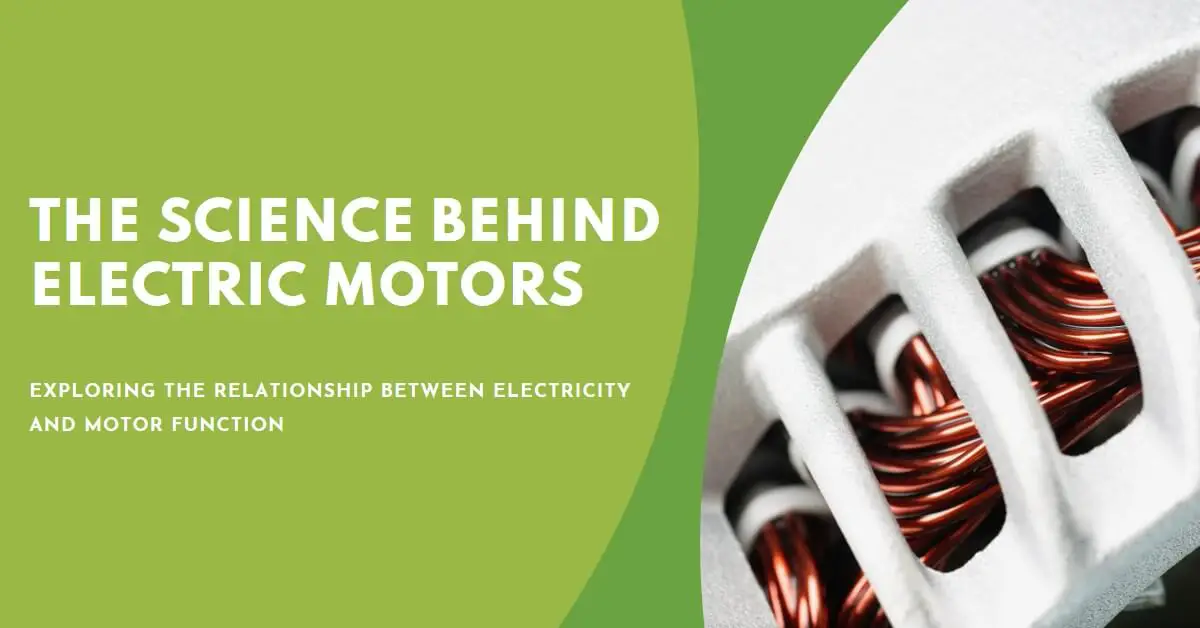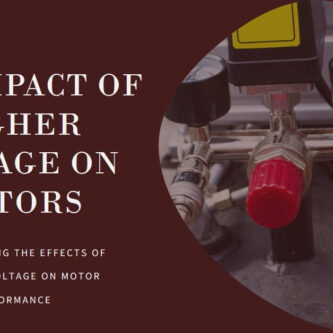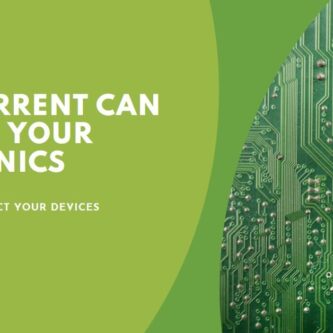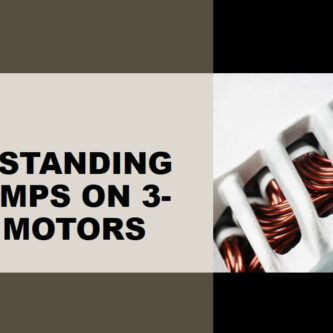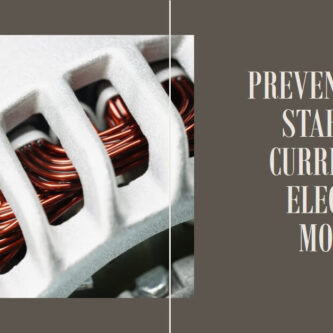Image: “Article Feature Image” by Bing is licensed under CC BY-NC-SA 4.0. Source: Bing Graphic Art. License: CC BY-NC-SA 4.0.
Electric motors play a crucial role in our modern world, powering a wide range of devices and machinery.
However, they are fundamentally dependent on electricity to function. A good question I found while searching for a new good article to share with you is, can an electric motor run without electricity? As an electrical engineer, I confidently say, No, electric motors cannot run without electricity. They require an electrical power source to generate the necessary current to create a magnetic field and produce mechanical motion.
In this article, we will explore why electric motors require electricity, how electricity works within a motor, and why they cannot run without it.
The Role of Electricity in Powering Electric Motors
Electricity is the lifeblood of electric motors. It serves as the primary source of power, enabling these motors to convert electrical energy into mechanical motion.
Without electricity, the motor’s operation would cease, as it is the electrical current that drives the key components responsible for generating movement.
How Electric Motors Work
To understand the necessity of electricity for electric motors, it’s essential to grasp their underlying mechanisms.
Understanding the Electrical Components
Electric motors consist of several essential components, including a rotor, stator, and power source. The rotor is the moving part, while the stator remains stationary. These components work in tandem to generate rotational motion.
The stator contains copper wire coils that form electromagnets when an electrical current flows through them. These electromagnets create a magnetic field within the motor.
The rotor, on the other hand, carries a permanent magnet or electromagnet, which interacts with the magnetic field generated by the stator.
Conversion of Electrical Energy to Mechanical Energy
The flow of electricity through the stator’s wire coils produces a magnetic field that attracts or repels the rotor’s magnet.
This interaction causes the rotor to spin, converting electrical energy into mechanical energy.
Electricity drives this process by supplying the necessary current to create and maintain the magnetic field.
Without a continuous electricity supply, the magnetic field weakens or ceases to exist, and the motor loses its ability to generate mechanical motion.
Why do motors need electricity?
Electric motors require electricity for several reasons. First and foremost, the electrical current is crucial for creating and sustaining the magnetic field within the motor.
The magnetic field is what enables the motor to generate the force and torque necessary for rotation.
Additionally, electric motors need electricity because they rely on the principles of electromagnetism.
By harnessing the power of electricity, these motors can efficiently convert electrical energy into mechanical energy, providing a versatile and controllable source of motion.
How does electricity work in a motor?
In an electric motor specifically, electricity works in a motor through the interaction of magnetic fields.
When an electrical current flows through the wire coils in the stator, it creates a magnetic field. This magnetic field, in turn, interacts with the permanent magnet or electromagnet in the rotor.
The interaction between the stator’s magnetic field and the rotor’s magnet causes a force to be exerted on the rotor.
Depending on the polarity of the magnets, this force can attract or repel the rotor, resulting in rotational motion.
The flow of electricity through the stator’s wire coils is essential for maintaining the magnetic field. The continuous supply of electrical current ensures that the magnetic field remains strong and capable of exerting the necessary force on the rotor.
Without electricity, the magnetic field weakens, and the motor’s ability to generate rotational motion diminishes or ceases altogether.
Can Electric Motors Run Without Electricity?
No, electric motors cannot run without electricity. Electricity is the primary source of power for electric motors, enabling them to convert electrical energy into mechanical motion.
The flow of electrical current through the wire coils in the stator generates a magnetic field that interacts with the rotor’s magnet, causing it to spin and produce rotational motion.
Without a continuous supply of electricity, the magnetic field weakens or ceases to exist, rendering the motor unable to generate mechanical motion. Thus, electricity is an essential requirement for the operation of electric motors.
The Importance of Electrical Specifications for Electric Motor Performance
Electric motors require a specific amount of electricity to run efficiently and safely. The design of electric motors takes into account various factors, including voltage, current, and power ratings, to ensure optimal performance. Deviating from the designed electrical specifications can have detrimental effects on the motor.
Providing lower than the required electricity can lead to insufficient power for the motor to operate at its intended capacity.
This can result in reduced torque, slower speeds, or even stalling of the motor. Insufficient electricity can also cause overheating and increased stress on the motor’s components, potentially leading to premature wear and damage.
On the other hand, supplying an excessive amount of electricity, beyond the motor’s design limits, can be equally problematic. Overvoltage or excessive current can lead to increased heat generation, which can damage insulation, windings, and other sensitive components.
The motor may experience insulation breakdown, short circuits, or even catastrophic failure. Furthermore, excessive electricity can strain the motor’s bearings, leading to increased friction, heat, and potential mechanical failure.
To ensure the proper functioning and longevity of electric motors, it is crucial to adhere to the recommended electrical specifications. Read also my comprehensive article: The Shocking Impact: How Overvoltage Damages Electrical Equipment.
Operating within the designed voltage and current range helps maintain optimal performance, efficiency, and reliability.
Any modifications to the electrical supply should be done in accordance with the manufacturer’s guidelines and electrical standards to avoid damaging the motor.
Conclusion
In conclusion, electric motors rely on electricity as their primary power source and cannot run without it.
Electricity plays a vital role in creating and sustaining the magnetic field necessary for generating mechanical motion in electric motors.
Attempting to operate electric motors providing inadequate or excessive electrical supply can result in reduced performance, overheating, and potential damage to the motor’s components.
Adhering to the designed electrical specifications and guidelines is crucial to ensure the safe and efficient operation of electric motors.
you work With Electricity! Don’t leave empty-handed!
Looking to stay ahead of the game in the world of electrical engineering? Subscribe to my YouTube channel and gain access to exclusive content you won’t find anywhere else!
The staff I recommend (Amazon Affiliate Links to products I believe are high quality):
- Economy 120 Volt/60Hz AC Power Source – Step-Down Voltage & Frequency Converters 1800W
- UNI-T Digital Multimeter Tester UT139C
- 50-Amp Extension Cord for RV “100ft”
- Voltage Stabilizer 110/220v
- Hair Dryer “best selling“
- TOSHIBA EM131A5C-BS Countertop Microwave Ovens
Disclaimer: This contains affiliate links to Amazon products. I may earn a commission for purchases made through these links.

